LED Post Lanterns vs. Traditional Parking Lot Lighting: Benefits for Commercial Properties

Commercial properties seeking reliable outdoor lighting increasingly turn to advanced technology like led post lanterns and led parking lot lights. Businesses benefit from led lighting, which consumes at least 75% less energy than traditional options and delivers up to 25 times the lifespan. Property owners also experience improved safety and security, as studies link better commercial exterior lighting to a 36% reduction in nighttime outdoor crimes. Choosing led solutions for commercial outdoor lighting enhances both business efficiency and environmental responsibility.
Led Light products convert 95% of energy into illumination, minimizing waste.
Lower maintenance and longer warranties support business profitability.
Learn more about how lighting upgrades can impact Home, Product, and About Us decisions for any commercial outdoor environment.
Key Takeaways
LED post lanterns and parking lot lights use up to 90% less energy and last over 50,000 hours, greatly reducing electricity bills and replacement needs.
LED lighting improves safety by providing brighter, more even light that reduces dark spots and lowers crime rates in commercial outdoor spaces.
LED fixtures require much less maintenance than traditional lights, saving time and money on repairs and replacements.
Switching to LED lighting helps commercial properties lower their carbon footprint by cutting energy use and avoiding hazardous materials.
Although LED lights cost more upfront, they offer strong long-term savings with quick payback periods and increased property value.
Quick Comparison
Key Benefits
Selecting the right lighting for commercial outdoor spaces impacts energy use, maintenance, safety, environmental responsibility, and cost-efficiency. The table below highlights the main differences between LED post lanterns, LED parking lot lights, and traditional lighting options for commercial exterior lighting.
Feature | LED Post Lanterns & LED Parking Lot Lights | Traditional Lighting |
|---|---|---|
Energy Efficiency | Uses 50-85% less energy; 30-50 watts typical | 70-150 watts; high energy use |
Lifespan | Up to 50,000 hours; fewer replacements | About 10,000 hours |
Maintenance | Minimal; long intervals between service | Frequent bulb changes |
Light Quality | Bright, uniform, adjustable color temperature (2200K-6500K) | Fixed, often yellowish light |
Safety & Security | Enhanced visibility; reduces accidents and crime | Lower visibility; more dark spots |
Environmental Impact | No mercury; low carbon footprint; recyclable | May contain hazardous materials; higher emissions |
Cost-Efficiency | Lower initial cost, but higher long-term expenses |
Tip: LED lighting not only reduces energy bills for commercial properties but also improves outdoor safety and security. Businesses benefit from fewer maintenance disruptions and a more sustainable lighting solution.
LED post lanterns and LED parking lot lights deliver superior performance in commercial outdoor lighting. They offer advanced features such as smart integration and adaptive controls, which traditional lighting cannot match. LEDs withstand harsh outdoor conditions, making them ideal for commercial use. Their long lifespan and low maintenance needs support business operations and profitability.
Commercial properties that upgrade to LED lighting experience brighter, more reliable illumination. This leads to improved safety for both pedestrians and vehicles. The environmental benefits also align with modern sustainability goals, reducing the carbon footprint of commercial exterior lighting.
Energy Efficiency
LED Post Lanterns
LED post lanterns set a new standard for energy efficiency in commercial outdoor lighting. These fixtures use advanced technology to convert nearly all incoming electricity into visible light, reducing waste and maximizing output. On average, LED lighting consumes at least 75% less energy than traditional lighting systems. Some installations report energy savings as high as 90% compared to older incandescent bulbs.
Statistic Description | LED Technology Value | Traditional Lighting Value |
|---|---|---|
Energy consumption reduction | Uses at least 75% less energy | Baseline (incandescent bulbs) |
Maximum energy savings | Uses up to 90% less energy | Baseline (incandescent bulbs) |
Lifespan | Lasts up to 25 times longer | Baseline (incandescent bulbs) |
Projected annual energy savings by 2035 | 569 TWh (equivalent to 92 power plants) | N/A |
Commercial properties that switch to LED post lanterns experience significant reductions in electricity bills. For example, a property that spends $300 per month on lighting can save up to $75 each month, resulting in $900 annual savings. Over ten years, these savings can reach $14,000, not including additional benefits such as lower maintenance costs and increased property value.
Note: Energy-saving features in LED lighting help businesses meet sustainability goals while improving their bottom line.
Large-scale projects confirm these results. At Palermo University Campus, replacing traditional lamps with LED fixtures led to energy savings of up to 84%. Adaptive controls and dimming options further increase efficiency, especially during off-peak hours.
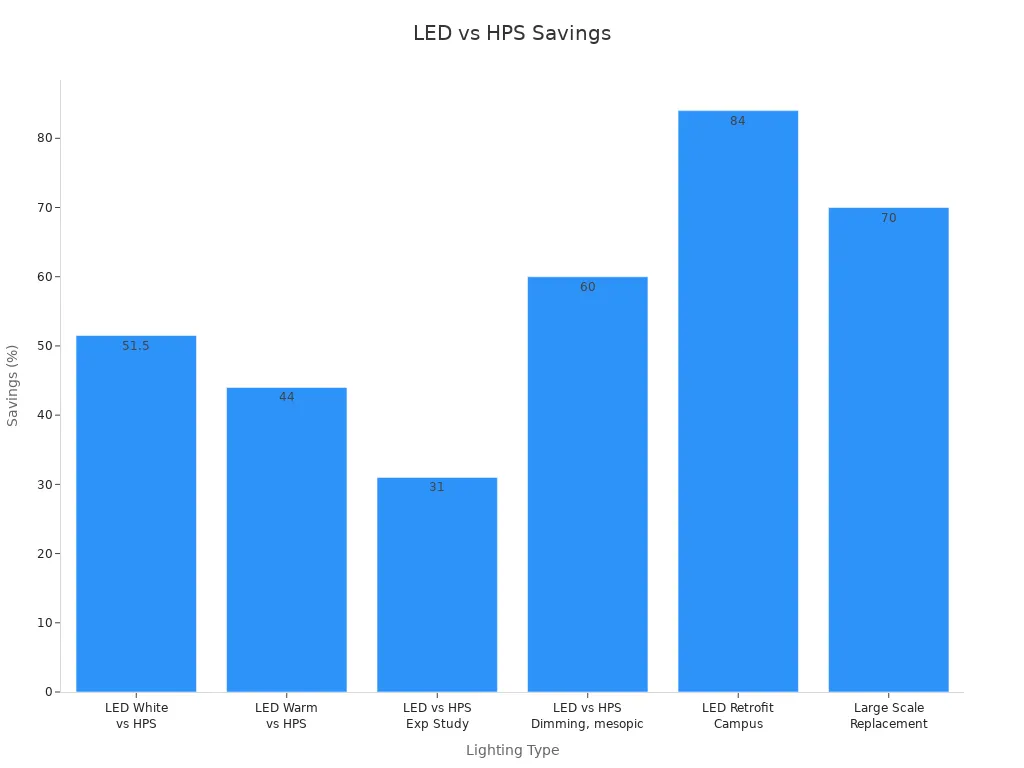
Traditional Lighting
Traditional lighting, such as high-pressure sodium (HPS) or metal halide lamps, uses much more electricity to produce the same amount of light. These systems often require 70 to 150 watts per fixture, while LED alternatives typically use only 30 to 50 watts. This difference means traditional lighting can consume up to three times more power than LED solutions.
Lighting Type Comparison | Energy Savings (%) | Notes |
|---|---|---|
LED (Neutral White) vs HPS | Considering mesopic effects, optimal lighting solutions with lowest installed power | |
LED (Warm White) vs HPS | 29–59% | Same conditions as above |
LED vs HPS (Experimental Case Study) | ~31% (normal lighting) | Photometrically equivalent conditions, M3 street lighting class |
LED vs HPS (with dimming and mesopic effects) | ~60% total | Energy savings increased by dimming and mesopic vision consideration |
LED Retrofit Project (Palermo University Campus) | Up to 84% | Energy savings with dimming applied, replacing HPS and HPM lamps |
Large Scale Replacement (193,045 luminaires) | 70% annual energy savings | Economic analysis with electricity cost 0.19 €/kWh, 4167 h/year usage |
Traditional lighting also generates more heat, which wastes energy and can increase cooling costs for nearby buildings. These systems lack the adaptive controls found in modern LED lighting, making it harder for commercial property owners to optimize energy use.
A large-scale field experiment found that commercial properties with lower energy costs attract higher sale prices and sell faster. Reduced electricity consumption not only saves money but also increases property value and marketability.
Tip: Upgrading from traditional lighting to LED lighting provides immediate and long-term financial benefits for commercial properties.
Maintenance and Lifespan
LED Parking Lot Lights
LED parking lot lights stand out for their impressive life span and low maintenance requirements. Most LED fixtures last between 50,000 and 100,000 hours, which means property owners can expect over a decade of reliable service before needing replacements. Unlike traditional bulbs that burn out suddenly, LEDs dim slowly over time. This gradual change allows for planned maintenance, reducing unexpected outages.
Aspect | Traditional HPS Lamps | LED Lights |
|---|---|---|
Every 2-3 years | Every 10+ years | |
Labor Costs | High | Low |
Energy Use | High | Reduced |
LEDs also resist harsh weather and temperature changes, making them ideal for outdoor environments. Facilities that switch to LED lighting often see maintenance costs drop by 60-75%. Municipalities report saving $50-$100 per light each year, freeing up budgets for other improvements. Real-world examples, such as Walmart and Stony Brook University, show that LEDs not only cut energy use but also reduce operational disruptions.
Note: LEDs use up to 75% less energy than older bulbs, which means fewer replacements and less time spent on repairs.
Traditional Options
Traditional lighting options, such as high-pressure sodium and metal halide lamps, require frequent attention. These bulbs typically last only 6,000 to 15,000 hours, so maintenance teams must replace them every 2-3 years. Metal halide lamps often need early replacement to avoid color shifts and performance issues. They also have warm-up times and risk sudden failure, which can disrupt business operations.
Lighting Type | Typical Lifespan (hours) | Maintenance Frequency (relative to LED) | Additional Maintenance Factors |
|---|---|---|---|
LED | 25,000 - 100,000 | 1 (lowest) | Gradual dimming, no frequent replacements needed |
Metal Halide | 6,000 - 15,000 | 2-5 times more frequent | Regular relamping, ballast replacement, early bulb changes |
Frequent bulb changes and repairs increase labor costs and can interrupt daily activities. In contrast, LED solutions offer a much longer life span and require far less attention, making them a smart investment for commercial properties.
Light Quality and Safety
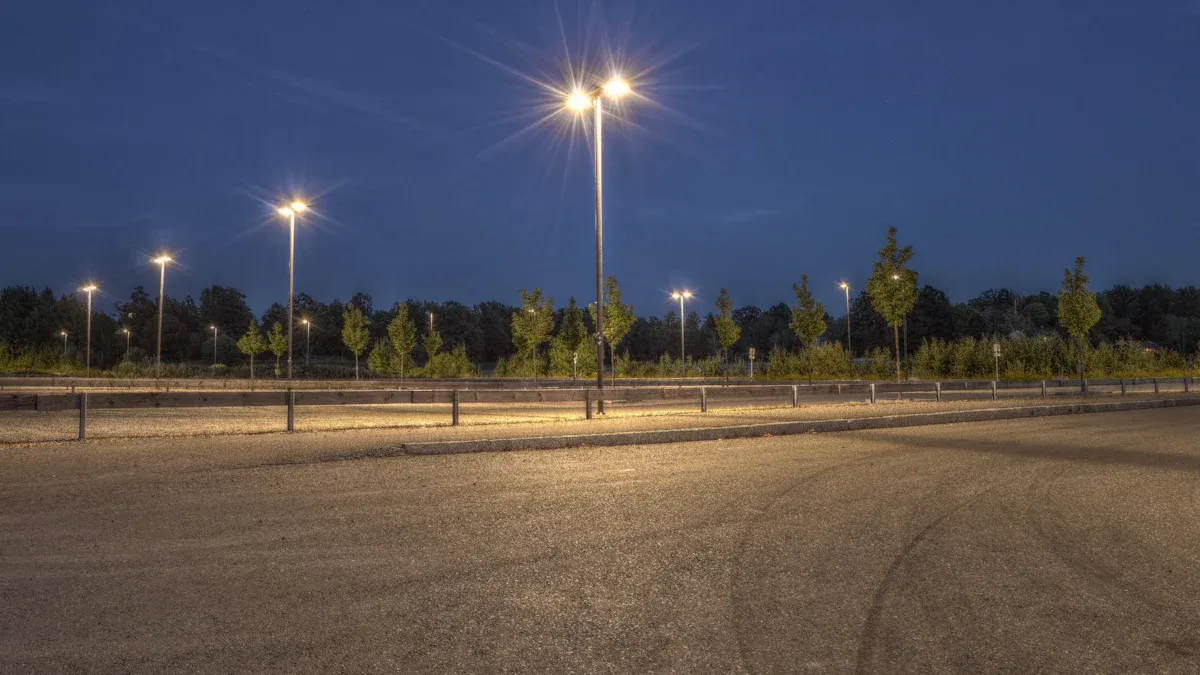
LED Lighting
LED lighting transforms commercial exterior lighting by delivering brighter, more uniform illumination. Property owners notice that LED fixtures provide higher brightness levels and even light distribution across parking lots and walkways. This improvement in light output reduces shadows and dark spots, which often hide hazards or suspicious activity.
LEDs offer superior color rendering compared to traditional lamps. Colors appear more natural and objects become easier to identify at night. This feature increases visibility for drivers and pedestrians, making outdoor spaces safer for everyone. Businesses that install LED lighting benefit from consistent performance in all weather conditions. The technology resists flickering and maintains steady brightness, even in cold or wet environments.
LED lighting also allows for adjustable color temperature. Property managers can select warmer or cooler tones to match the desired atmosphere or meet specific safety needs. Smart controls and sensors further enhance efficiency by adjusting light levels based on activity or time of day. These features help reduce energy use without sacrificing safety or security.
Note: LED lighting creates a welcoming environment for customers and employees while supporting sustainability goals.
Improve Safety and Security
Improved lighting plays a critical role in reducing accidents and crime in commercial outdoor spaces. Studies show that LED lighting increases visibility, which helps drivers avoid obstacles and pedestrians navigate safely. Enhanced illumination discourages unwanted behavior and supports security efforts.
A meta-analysis of 13 studies found that improved street lighting, including LEDs, led to a 21% decrease in crime in experimental areas compared to control areas. U.S. night and day studies reported a 22% reduction in crime, while surveys in Dudley and Stoke showed decreases of up to 43%. The table below summarizes these findings:
Study/Analysis Type | Effect on Crime (Relative Effect Size, RES) | Confidence Interval (95% CI) | Crime Reduction (%) in Experimental Areas |
|---|---|---|---|
Meta-analysis of 13 studies | 1.27 | 1.09 – 1.47 | 21% decrease compared to control areas |
U.S. Night and Day Studies (4) | 1.28 | 1.06 – 1.53 | 22% decrease |
Dudley Study (Victim Survey) | N/A | N/A | 40.8% decrease |
Dudley Study (Self-Reports) | N/A | N/A | 35.0% decrease |
Stoke Study (Victim Survey) | N/A | N/A | 42.9% decrease |
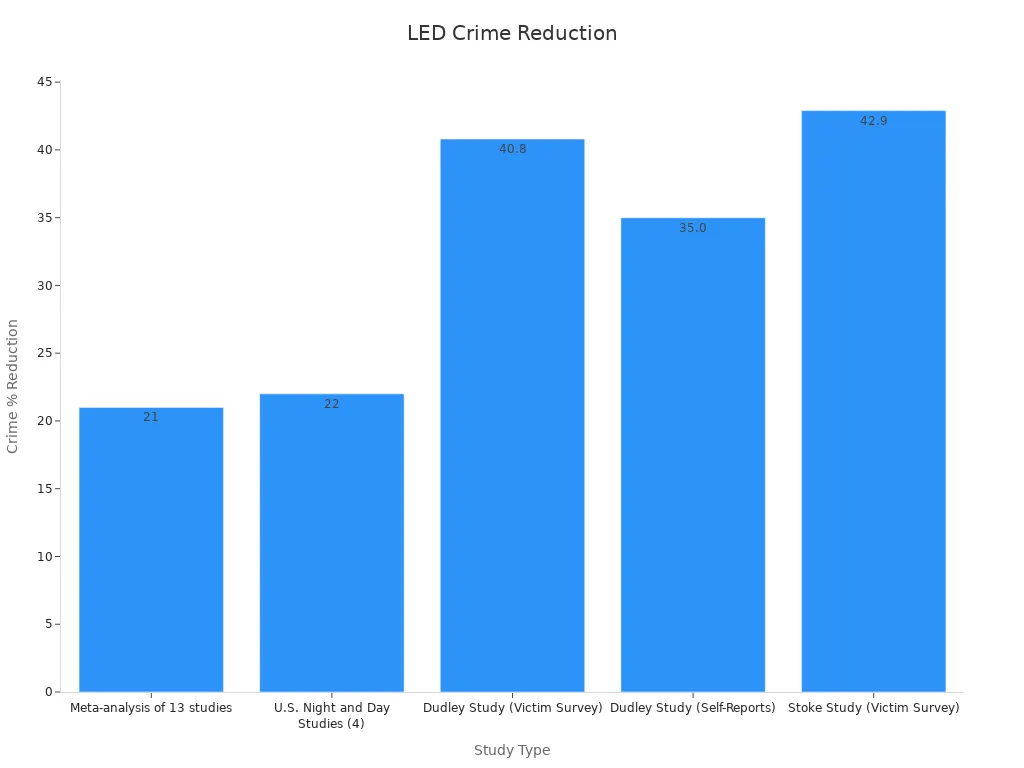
LED lighting helps improve safety and security by making it easier for security cameras to capture clear images and for staff to monitor activity. The reduction in crime and accidents leads to lower insurance costs and greater peace of mind for property owners.
However, some research suggests that brighter lighting does not always guarantee fewer accidents. In one city, an increase in bright lighting, including LEDs, resulted in an 11% rise in 24-hour road traffic collisions and a 16% increase in nighttime-only collisions. This finding highlights the importance of proper lighting design and placement to maximize safety benefits.
Commercial properties that invest in LED lighting for outdoor areas create safer, more secure environments. The combination of better visibility, even light distribution, and advanced controls supports both operational goals and community well-being.
Environmental Impact
LED
LED lighting offers significant environmental advantages for commercial properties. These systems use less energy, which lowers greenhouse gas emissions. Several environmental studies show that both the production and use of LED luminaires result in a much smaller carbon footprint compared to traditional lighting. Electricity consumption during operation accounts for about half of the total environmental impact, but the overall emissions remain low due to high efficiency.
LED lighting can reduce energy use by up to 75% compared to incandescent bulbs.
Life cycle assessments highlight that operational and embodied emissions are both lower for LEDs.
Lighting accounts for about 5% of global greenhouse gas emissions, so switching to LEDs can make a real difference.
LEDs also help reduce light pollution. Their directional design focuses light where it is needed, minimizing wasted light and glare. This protects local wildlife and helps maintain dark skies. The table below compares key sustainability indicators:
Indicator | Traditional Street Lights | |
|---|---|---|
Energy Efficiency | 130+ lumens per watt | ~100 lumens per watt |
Lifespan | Up to 50,000 hours | 10,000 – 25,000 hours |
Maintenance Frequency | Less frequent | More frequent |
LED lamps contain no mercury or other toxic chemicals. They are 100% recyclable and safe for disposal. Studies show that metals like lead and arsenic in LEDs are well below regulatory limits, making them safe for the environment. High concentrations of valuable metals such as gold and copper also support recycling efforts.
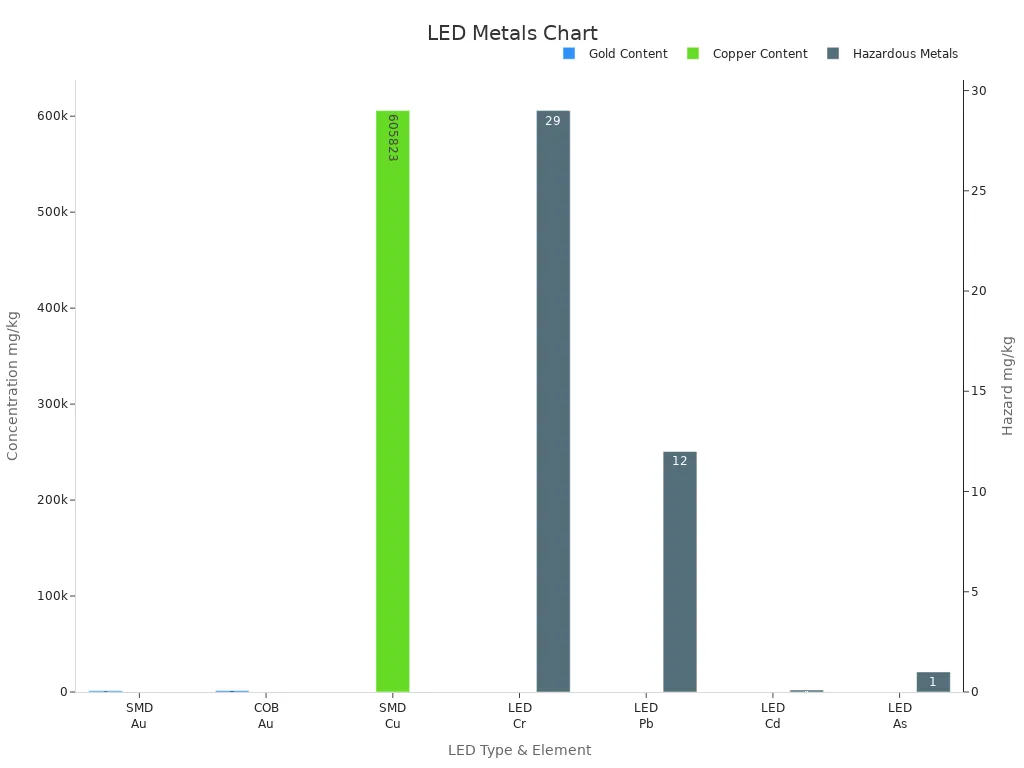
LED lighting supports sustainability goals by reducing waste, saving energy, and protecting ecosystems.
Traditional Lighting
Traditional lighting options, such as high-pressure sodium and metal halide lamps, have a larger environmental impact. These systems use more electricity, which increases carbon emissions. Their shorter lifespan means more frequent replacements, leading to higher waste and resource use.
Traditional lamps often contain hazardous materials like mercury. Improper disposal can harm soil and water. These lights also scatter more light, causing greater light pollution and disrupting local wildlife. Maintenance costs and environmental risks remain high throughout their use.
Choosing LED lighting over traditional options helps commercial properties lower their carbon footprint and support a healthier environment.
Aesthetics and Flexibility
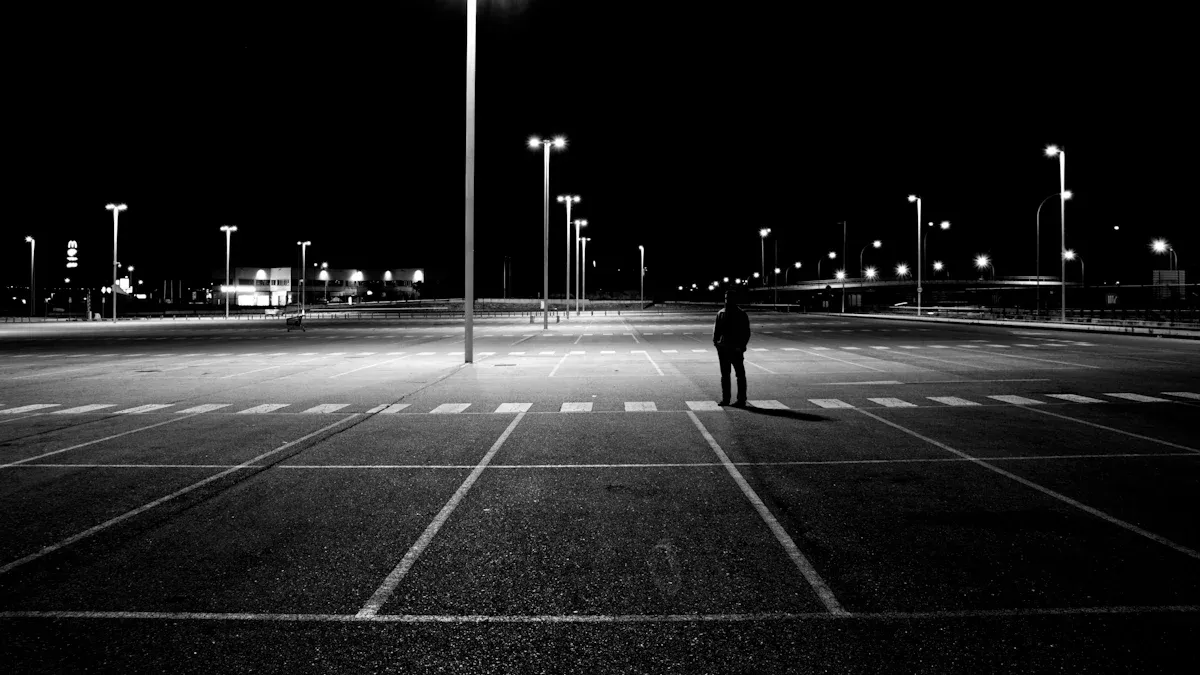
LED Post Lanterns
LED post lanterns help commercial properties stand out by improving both appearance and function. Property owners can choose from many styles and finishes, making it easy to match the lighting to any building design. These lanterns often feature customizable color, temperature, and brightness settings. This flexibility allows businesses to set the right mood for their outdoor spaces, whether they want a warm, welcoming glow or a bright, modern look.
Studies show that LED lighting increases property value and attracts more tenants or buyers. Many commercial properties use LED post lanterns to highlight landscaping, pathways, and entrances. By placing these lights along walkways or near trees and bushes, owners create a safe and inviting environment for visitors. The ability to adjust light levels also helps save energy and supports a comfortable atmosphere.
LED post lanterns not only make properties look better but also improve safety by lighting up dark areas and deterring unwanted activity.
Design Options
LED post lanterns offer a wide range of design options for commercial properties. Owners can select lanterns that fit classic, modern, or custom architectural styles. Many models allow for color changes and adjustable brightness, making it easy to set the right tone for special events or daily use.
Choose from different finishes and materials to match building decor.
Use uplighting and downlighting to highlight landscaping or unique business features.
Place decorative lanterns along pathways to boost safety and add charm.
Integrate smart controls, such as motion sensors or remote scheduling, for added convenience and energy savings.
Select weather-resistant designs for long-lasting outdoor performance.
Lighting can also support brand identity. By illuminating building exteriors with distinctive colors or patterns, businesses draw attention and improve nighttime visibility. Warm-toned and accent lighting creates a welcoming atmosphere, encouraging customers to visit and stay longer.
Cost Analysis
Initial Investment
Commercial property owners often notice that LED post lanterns and parking lot lights require a higher initial investment than traditional lighting. The price per LED fixture is greater, and installation may involve extra costs for retrofitting or new wiring. For example:
Commercial LED bulbs usually cost about $8 each, while traditional incandescent bulbs cost around $1.
LED systems may need more upfront planning and labor.
Despite these higher initial costs, many businesses find that rebates and incentives from governments or utilities can help offset expenses. The higher price reflects the advanced technology and longer lifespan of LED products. Owners who choose LED lighting invest in durability and energy efficiency from the start.
Long-Term Savings
Over time, LED lighting delivers significant savings for commercial properties. LEDs use 50-75% less energy than traditional bulbs and last 10-25 times longer. This means fewer replacements and lower maintenance costs. The table below shows a real-world example from a university campus:
Metric | Existing Lighting | LED Lighting | Savings / ROI |
|---|---|---|---|
Annual energy cost | $68,000 | $37,800 | $30,200 saved (44%) |
Capital investment | $27,700 | $140,900 | Net investment $113,200 |
N/A | 4.01 | Payback in about 4 years | |
ROI over 10 years | $0 | $140,000+ | Strong long-term return |
Many businesses report energy consumption reductions between 65% and 85%. Some see payback periods as short as one year. Annual savings can reach hundreds of thousands of dollars, especially for large commercial sites. LED retrofitting also supports cost-efficiency by reducing utility bills and maintenance needs.
Detailed cost analysis reports show that LED upgrades help increase revenue and profitability. Key performance indicators include energy savings percentage, gross profit margin, ROI evaluation, and cash flow monitoring. Most commercial properties recover their investment within two to four years, then continue to benefit from lower expenses and improved profitability.
Tip: Investing in LED lighting helps businesses control costs, boost profitability, and support long-term financial health.
LED post lanterns and parking lot lights deliver clear benefits for commercial exterior lighting. They cut energy use by up to 90%, last over 50,000 hours, and improve safety with better visibility. The table below highlights key advantages:
Benefit | LED Lighting | Traditional Lighting |
|---|---|---|
Energy Savings | Up to 90% | Baseline |
Lifespan | 50,000+ hours | 10,000 hours |
Safety | Enhanced visibility | More dark spots |
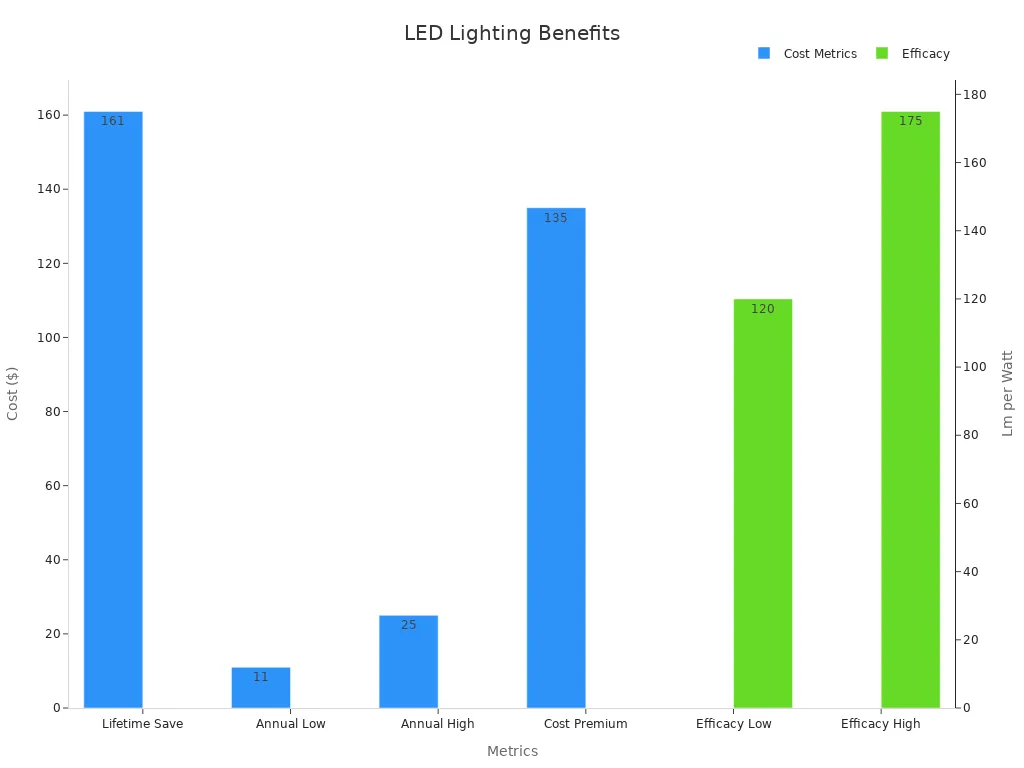
Property owners should review their outdoor lighting to lower costs, reduce maintenance, and support a safer, greener environment.
FAQ
What is the main advantage of LED post lanterns for commercial properties?
LED post lanterns use less energy and last longer than traditional lights. They provide bright, even light that improves safety. Businesses save money on electricity and maintenance.
How often do LED parking lot lights need replacement?
Most LED parking lot lights last 50,000 hours or more. Property owners usually replace them every 10 years. This reduces maintenance costs and keeps outdoor areas well-lit.
Do LED lights work in cold or wet weather?
LED lights perform well in all weather conditions. They resist cold, rain, and snow. This makes them reliable for outdoor commercial use year-round.
Are LED fixtures more expensive to install?
LED fixtures cost more upfront than traditional lights. However, businesses recover these costs through lower energy bills and fewer replacements. Many find the investment pays off within a few years.
Can LED lighting help reduce crime in parking lots?
Studies show that LED lighting improves visibility and reduces dark spots. This helps lower crime rates and creates a safer environment for customers and employees.
See Also
Advantages And Care Tips For LED Parking Lot Lights
Commercial Outdoor Lighting Options Enhancing Safety And Style
Comparing LED Streetlights With Traditional Lights On Savings
Reasons LED Lighting Excels Over Traditional Garage Fixtures
Creative Commercial Lighting Designs Combining Beauty And Efficiency

